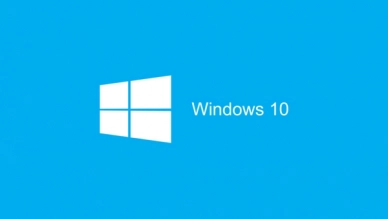What is a Website? Basic Knowledge about Websites
If you are reading this article, it means you are accessing my website at kiemtientuweb.com. Most of the information and content you read, watch, and see every day on the internet are also websites. Now, let's explore the exact definition of a website and the related information.
What is a Website?
Web is a common term for the World Wide Web, a subset of the Internet consisting of pages that can be accessed using a web browser. Web pages are formatted using a language called Hypertext Markup Language (HTML). This language allows users to click through pages on the Web via links. The Web uses the HTTP protocol to transmit data and share information. Browsers like Internet Explorer, Google Chrome, or Mozilla Firefox act as tools for users to access Web documents or Web pages connected through links.

The Web is just one of the ways to share information over the Internet, alongside other methods such as email, instant messaging, and File Transfer Protocol (FTP).
In short, the Web is a network.
Site means location. For example, a worksite means a workplace, indicating a specific location or address.
Thus, Website = Web + Site, which means a specific address within the global network, also known as a web page.
This means that a website must meet certain criteria: it must be part of the global network, accessible via web browsers, use the HTTP protocol to transmit data and share information, and importantly, it must have a specific address.
Websites typically contain text, images, videos, and many other content formats, stored on servers.
Structure and Operation of a Website
A website usually contains many web pages, often referred to as subpages. All of these are stored in HTML or XHTML (Extensible HyperText Markup Language - an extension of HTML) format. They are stored on servers.
When users want to access information from a website, they need to use web browsers to access the website's address, read the files stored in HTML or XHTML format, and display them in a visual format for easy content reception and interaction.
To operate, a website needs the following components:
- Source Code: To display content, allow interaction, optimize automatically for various devices, etc.
- Web Hosting: If a website is a house, hosting is the land on which that house is built. It stores the source code, images, videos, content, etc., of the website.
- Domain: When you have the land and the house, you need an address so others can find and access it. Hence, you need a domain name. Each domain name is unique worldwide to ensure everyone can find your exact address.
Website Interface Components
A website or a web page needs the following components to operate and be used normally:
1. Header
The top section of a page usually contains the logo, navigation bar, search button, shopping cart, etc. However, in some cases like landing pages, the header may be absent or only include the logo.
2. Slider/Carousel
This component is not mandatory but is commonly found on many websites to attract user attention. It displays summaries of important content, hot promotions (for e-commerce sites), call-to-action buttons (like messaging, filling out forms), trending news (for news websites), etc. Websites often use dynamic designs with sliding images showcasing various highlights, but some may use static images, known as banners.
3. Content Area
This is where the main content, also known as the body, is displayed. When reading this article, the text and images you are viewing are in the content area. This is the most important part of a website, providing the most valuable information to readers. All content in the content area directly affects search engine rankings on Google and determines whether readers will stay on the website.
4. Footer
Located at the bottom of the page, the footer varies in form, content, and information displayed but mainly includes copyright info, licenses, links to social media pages, Google Maps, related websites, store and branch systems, and navigation menus.
5. Sidebar
Frequently used on many websites, the sidebar is not crucial but helps users access additional information such as related content, interesting topics, products and services, promotions, etc. As the name suggests, the sidebar is placed on one or both sides of the website, next to the content area (body). Typically, the sidebar is on the right and appears when accessing the website on a computer or tablet, as mobile screens are too narrow for it.
Important Web Pages
Although there is no strict standard, most functional websites need the following five web pages:
- Home Page: The first page that appears when users access the domain. It should contain the most important information of the website. For e-commerce sites, the home page should feature main products for sale. For news websites, the home page should display the latest hot news. The home page must include links to other pages.
- About & Contact Page: This page contains company/personal profiles with information on capabilities, products/services offered, and contact methods such as phone numbers and social media links.
- Product Page: For e-commerce websites, this page provides detailed information about each product or service for customers to review and purchase. To allow customers to place orders and pay directly on the website, additional pages like a shopping cart and checkout are needed.
- Content Page: News websites need multiple subpages for each category. E-commerce sites also need content pages to introduce, provide information about products and services, such as reviews, user guides, purchase advice, etc.
- Legal Information Page: This page contains terms, copyright policies, shipping policies, payment policies, data collection and processing policies, etc. Although rarely visited, it is crucial in case of disputes.
Of course, there are many other types of subpages for specific purposes, but most websites generally include the above-mentioned pages.
Popular Types of Websites
To list popular types of websites, we need to classify them based on certain criteria.
1. By Structure and Operation
- Static Websites: Like landing pages, these rarely change or have interactive features. Static websites primarily use HTML combined with CSS and JavaScript. Despite many limitations, static websites are simple, quick to build, and lightweight.
- Dynamic Websites: HTML, CSS, and JavaScript help display content in a specific order, but for more complex interactions, dynamic websites require programming languages, with PHP and a database like SQL Server or MySQL being the most common. Dynamic websites offer high interactivity and easy content updates.
2. By Purpose
Websites can serve diverse purposes, such as company introduction, product introduction, personal introduction, e-commerce, news, social networking, e-marketplaces, etc.
3. By Field
Technology, education, construction, interior design, restaurants, hotels, automotive, real estate, etc., each field has specific designs, interfaces, colors, and features suitable for its needs.
Before building a website, all these criteria, including structure and operation, purpose, and targeted field, must be determined to create the most suitable website, providing the best value for the owner and customers.
I hope this article has helped you understand the basics of what a website is, the necessary components for a website to function, and the difference between a website and a web page. If you have any questions related to websites, feel free to leave a comment below.
Submit feedback
Your email address will not be made public. Fields marked are required *
Search
Trend
-
What is Black Myth: Wukong? Detailed Guide on System Requirements and Gameplay
08-21-2024 . 1k view
-
The simplest and fastest way to log into the Chinese TikTok, Douyin.
01-10-2022 . 1k view
-
Blog sites that will accept AI generated content
07-26-2024 . 1k view
-
Call of Duty: Black Ops 6 - Intense, Mysterious, and Surprising Warfare
09-02-2024 . 1k view
-
The "End of Life" for Windows 10: A Massive E-Waste Threat and Sustainable Solutions
08-18-2024 . 969 view







10 feedback
Lastry Sulas
2024-08-25 Reply
What is a website?
Reply Hide
Nouara Insaf
2024-08-03 Reply
What is the difference between the Web and the Internet?
Reply Hide
Viih Silva
2024-08-18 Reply
What are the main components required for a website to function?
Reply Hide
Sara Carrasco
2024-08-13 Reply
What is the purpose of the "Header" in a website layout?
Reply Hide
Adel Alsaeed
2024-08-14 Reply
What is a "Slider" or "Carousel" on a website?
Reply Hide
Asma Mohamed
2024-08-09 Reply
What is the most important part of a website, and why?
Reply Hide
Abdul Hakim
2024-06-18 Reply
What is a "Footer," and what information does it usually contain?
Reply Hide
Atharva Koli
2024-08-17 Reply
What is the role of the "Sidebar" on a website?
Reply Hide
Amanda Safa
2024-06-20 Reply
What are the five essential web pages that most functional websites should have?
Reply Hide
Ramissam
2024-08-08 Reply
What is the difference between static and dynamic websites?
Reply Hide